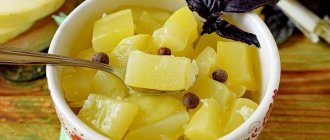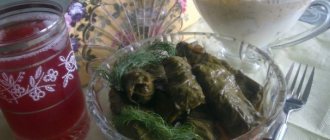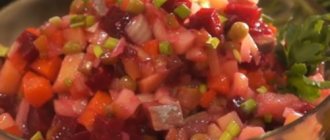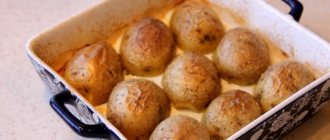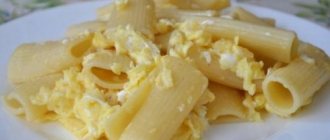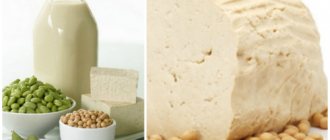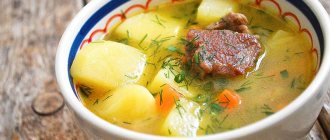Georgia is considered the birthplace of this sweet, although various versions of preparing churchkhela are found in the national cuisines of several Caucasian peoples. This dessert is also popular in Turkey, where it is sold on the streets and in markets. To try delicious, sweet churchkhela, just familiarize yourself with the peculiarities of its preparation and choose the recipe you like. The necessary products are easy to find on the shelves - these are nuts, flour, grapes. The traditional composition is walnuts and grape juice, but you can experiment with the ingredients to get different flavors.
Benefits of churchkhela
Looking at the recipe or the composition of the product, it is easy to understand that sweetness is very healthy. It is completely natural and even such a bright color is natural, and long-term storage is possible thanks to the recipe, and not to preservatives and additives. Nevertheless, the calorie content of the delicacy is very high - 300 kcal per 100 grams of the classic product made with grape juice. The presence of fruit acids such as malic, tartaric and others, depending on the base of the bekmes, a large number of vitamins and minerals beneficial to the body, puts churchkhela in the category of highly nutritious dishes, so it will be very good for snacks needed to restore strength during the working day . The introduction of churchkhela into the diet helps to increase efficiency, improves digestion, the functioning of the cardiovascular system, and gives a feeling of vigor.
However, you need to remember that by using various juices, you fill the dish not only with their benefits, but also with contraindications - do not forget about individual allergies to juices, nuts and flour components. People with obesity and diabetes should also be careful, or avoid this product altogether. Also, due to the presence of nuts and high calorie content, sweets should be consumed carefully in the 3rd trimester of pregnancy.
Other combination options
For variety, you can try different combinations of juice and nuts when making candy. The following types of juices are suitable:
- apple;
- pomegranate;
- apricot;
- cherry.
You can add a few tablespoons of berry puree or a couple of teaspoons of cinnamon, cloves, cardamom to the juice. As a solid filling, it is allowed to use not only nuts, but also dried fruits: dried apricots, prunes, figs, raisins.
After several weeks, the surface of the candy becomes covered with a coating of oozing powdered sugar. This is normal. The dessert can be served cut into pieces, like candy. You can store it in this form in closed jars.
To prepare the mixture, you can use a slow cooker so you don’t have to stand at the stove all the time. All the ingredients needed to prepare the viscous mass will need to be mixed and left in the multicooker turned on to the “Steam” mode for an hour.
To avoid mistakes, you should follow the proportions and achieve the correct consistency of the jelly. A video with an example of preparation will help you understand how each stage of the process goes.
The finished dessert is quite high in calories, but has a high energy value. You can safely give pieces of churchkhela to children at school. This sweetness can also become an original addition to tea drinking and a bright decoration for the holiday table.
Georgian churchkhela
Having returned from a vacation at the seaside, many are probably wondering: how to cook churchkhela at home? Making this Georgian dish is so easy that after making it at least once, you will start making it all the time. The most beautiful - dark purple, almost black churchkhela - is obtained from the Isabella grape variety, which, among other things, is also quite aromatic. However, you can prepare a sweet from any grape juice with the only amendment - the juice must be fresh, otherwise the dish will not have the desired aroma and taste.
- Fresh grape juice – 2 l
- Walnuts – 300 g
- Hazelnuts – 50 g
- Flour - 200 g
We take a regular “Iris” type thread 40-60 cm long with a needle, fold it in half, and tie a large knot at the end. We string halves or quarters of peeled walnuts onto it. At the end of threading, we cut off the needle and also tie a knot at the other end, thereby forming a loop by which we will hang the workpiece to dry.
Pour 1 glass from the total volume of juice. Bring the remaining juice to a boil in a saucepan on the stove.
In a glass of poured juice, dilute 150 g of flour and gradually add it to the boiling liquid. If the grapes are sour, then at this stage you can add 1-3 tablespoons of sugar. according to your taste, but do not make the syrup very sweet, the delicacy will be cloying, and the dish, having lost its sourness, will lose from this.
Now we boil the mass and see if the bekmes is thick enough. You can check this with a thread, lowering it into the mixture and seeing if the mixture holds and how quickly it drains. If it is not thick enough, add more flour. You need to keep the bekmes on the stove for 5 minutes.
After which we begin to form the churchkhela - we lower a nut thread into it, pour a spoon over all the nuts, wait for half a minute and hang it out to drain. When bekmes stops dripping from the thread, repeat the procedure. On average we do it 3-5 times.
At room temperature, you need to dry the churchkhela for 5 days, but after a day you can hang it outside and continue drying there, if the weather permits, after which it can be eaten, or put in boxes lined with wax paper and left to ripen for a month in the dark dry place.
Churchkhela from dark grapes with hazelnuts and raisins
One of the main ingredients of churchkhela is grape juice. Try making it yourself. Dark grapes are best suited for this purpose. It gives a pleasant dessert taste and rich color. Instead of traditional walnuts, you can use hazelnuts and even raisins. Try this combination, you won't regret it! It is better to choose large raisins.
For the dish you need:
- 2.5 kg dark grapes;
- 300 g hazelnuts;
- 70-100 g (depending on size) seedless raisins;
- 1 cup (200 g) premium wheat flour;
- sugar to taste (you don’t have to add it).
Preparation:
- First you need to soak the raisins a little. First, it is washed under running water in a strainer. Then pour a small amount of boiling water over the dried berries and wait until the liquid cools. Using this procedure, you can destroy all dangerous microbes and allow the raisins to swell a little. Now it is placed in a strainer again, this time to dry.
- Now you need to mix hazelnuts and raisins on a thread. You can take turns, or you can do it the way you like. For example, 2 nuts and one raisin. In general, it's a matter of taste. Don't forget to make a loop on top for hanging.
- You need to squeeze the juice out of grapes in any way convenient for you. One and a half glasses of juice should be left for preparing the mixture with flour.
- The remaining juice is boiled on the stove until thickened. Depending on the desired result, this will take from half an hour to a whole hour. After the liquid has evaporated a little, you need to taste the juice for sweetness. If it is sweet enough, there is no need to add sugar. If not, sweeten to taste.
- A glass of sifted flour and one and a half glasses of cold juice should be mixed. If lumps do not dissolve, strain the mixture.
- It needs to be poured little by little into the hot juice, stirring thoroughly.
- When everything has cooled down, the nuts are dipped into the jelly-like mass several times so that they are properly “overgrown” with the sweet, thickened juice.
That's all. Now you should wait until the churchkhela cools down, or even better, dries a little. If you want to ripen it according to all the rules, then you need to know that the finished churchkhela is covered with a silvery-white coating. Don't be afraid, this is sugar released to the surface.
Video:
Armenian churchkhela
As mentioned above, the Armenian churchkhela is more diverse than the Georgian version. They make churchkhela at home from everything that is available and suitable for this dish. For residents of Russia, it will be most convenient to make churchkhela at home from apple juice, because Russia is very rich in apples.
- Flour - 7 tbsp. l.
- Water - 1 tbsp.
- Sugar - 3 tbsp. l.
- Walnuts - 2 tbsp.
- Apple juice - 2 tbsp.
How to cook churchkhela:
First of all, let's prepare the nut base - string the prepared, unroasted nuts onto a thread with a large knot at the end.
Then dilute the flour in water so that no lumps form.
Pour the juice into a saucepan and sweeten it, put it on the fire. As soon as the juice boils, reduce the heat and pour in the prepared flour liquid. In this case, the juice must be continuously stirred so that the flour brews evenly, without the formation of separate hard clots.
The flour brews very quickly and the mixture immediately thickens, so we continue to stir it the entire time it is on the stove until it reaches the desired consistency. On average, the process of cooking bekmes takes 5 minutes.
At the end of cooking, turn off the heat, take the thread with nuts, and put it in the pan with the prepared mixture. Using a spatula, cover the nuts on all sides, as if burying them in a heap. Then carefully pull out the workpiece and hang it to cool. Apple “honey” will drip from the thread, so you need to lay paper or place a baking sheet under the place where you dry the products.
While you are doing the procedure with all the other threads, the first one has already cooled and thickened, and it can be lowered into the mass again. The procedure is repeated until the layer of apple flour mass is 3 cm. After the last time, you can let the product drain, and then, after waiting about an hour, sprinkle it with fine nut crumbs, this will give a slightly unusual, but very appetizing look.
Next, we leave the workpieces to dry in a secluded place for 5 days. Cooked churchkhela at home can be stored until the next harvest.
How to cook churchkhela. Cooking errors
How to boil grape juice correctly?

